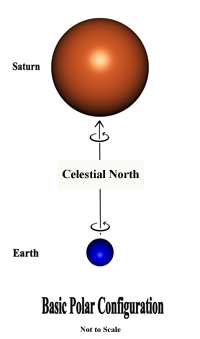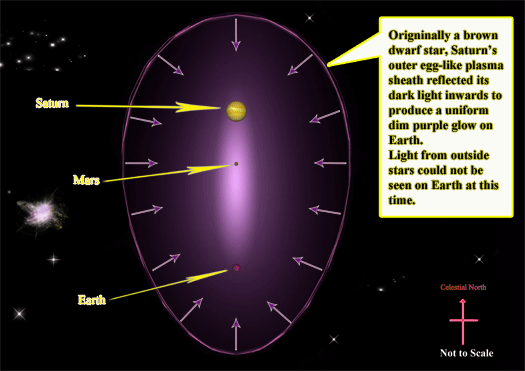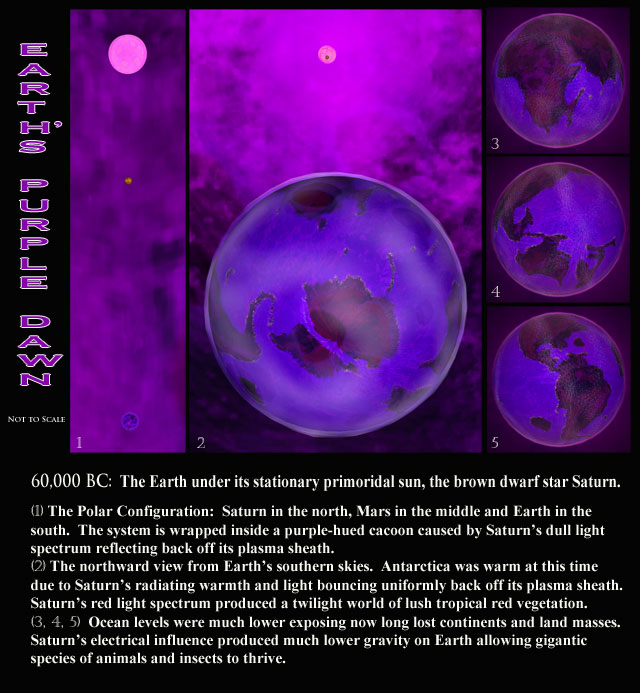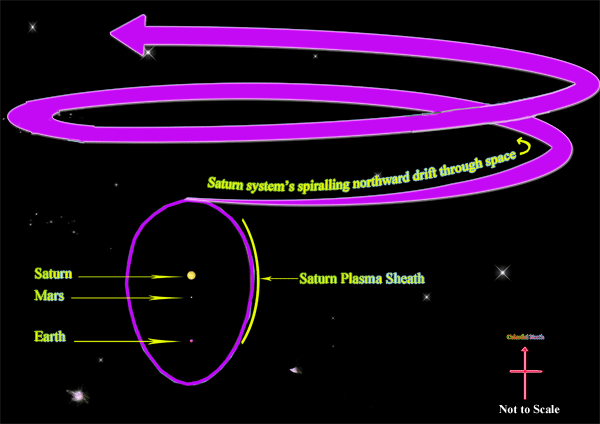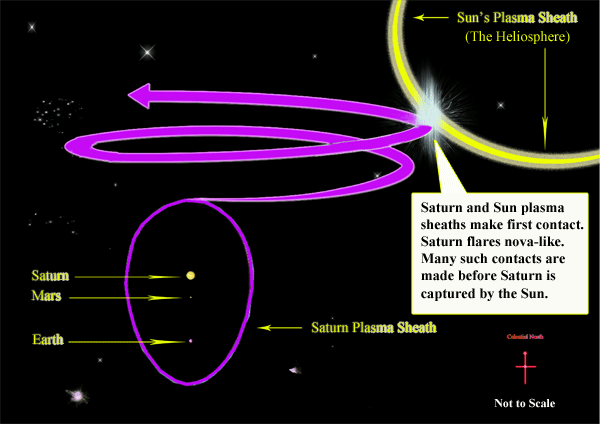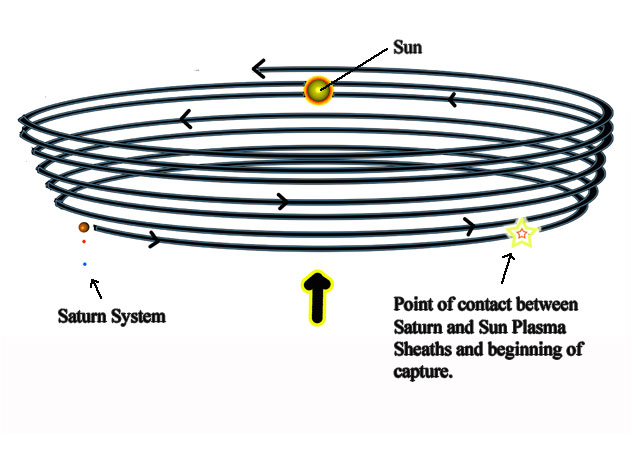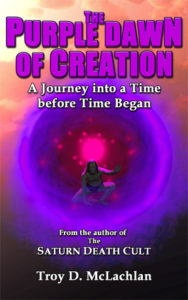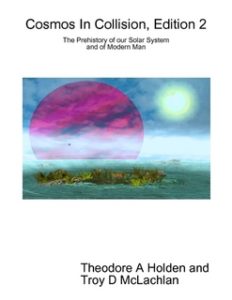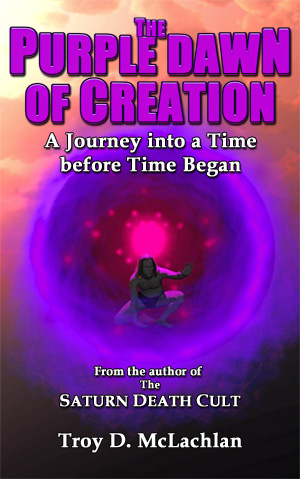
OUT NOW! On Amazon Kindle
Before the mythical paradise of Saturn’s Golden Age it is said there was darkness upon the face of the earth . . . this was the ‘Purple Dawn of Creation’.
You are about to undergo a speculative journey into a time before the coming of the Saturn god and the death cult that would follow him . . . an exploration into how Earth might have looked to a race of desperate alien space travellers looking for a new home 40,000 years ago; a time when Earth was still a planetary satellite of the brown dwarf star Saturn before its catastrophic capture by the Sun.
This ‘prequel’ to The Saturn Death Cult is packed full of illustrations showing Earth during its ‘purple dawn of creation’ epoch. Also included are speculative images of life on the ancient Jovian moon Ganymede, the once watery home world of the ‘Ganymedeans’, a hypothetical spacefaring people looking to escape their doomed planet then in orbit around the dying brown dwarf star Jupiter. For the Ganymedeans, the discovery of Earth was both a curse and a blessing; it offered them refuge and the hope for a new home. But Earth’s arrival, along with its giant host star Saturn, beckoned the coming destruction of their own fragile home world.
But what the Ganymedeans found on Earth was nothing like the once warm and safe oceans of ancient Ganymede. . . On Earth they found a new and dangerously wild world fraught with beasts and monsters; a planet cloaked in a sinister and permanent purple twilight shed by the primordial reddish-blue glow of Saturn. Here the Ganymedeans discovered a world where time did not exist; a world whose host star was on a destructive collision course with the Sun, and would eventually destroy their own ill-fated world of Ganymede . . .
Based on the radical cosmological theories and ideas expressed in the books The Saturn Death Cult and Cosmos in Collision, The Purple Dawn of Creation explores and introduces the reader to the fascinating semi-nocturnal world of life on Earth 40,000 years ago—according to the witness of ancient world mythology. Life at this time was primitive, dark and dangerous; a world incubating in the purple cocoon of Saturn’s primordial radiance, Earth’s original host star. On this world humankind struggled for survival, and faced their greatest challenge: the apex predator today called Neanderthals.
Please note: Due to its extensive use of colour images to illustrate its narrative, this book is best appreciated when viewed on a Kindle or Kindle-compatible device able to display colour images.
Remembered by the most ancient of peoples as the Purple Dawn, this was a distant, ageless past before light entered the world.
(continued from Saturn Death Cult – Part 1)
Earth in its distant past is reported by ancient traditions to have enjoyed a stable relationship with a dimly lit sun or star that sat motionless at the celestial north pole. For cultures in the southern hemisphere the world was a nocturnal haze devoid of all celestial references save for the chaotic void that hug above them.
The Polar Configuration
Dismissed by modern astrophysicists as an impossible scenario, this configuration between Earth and its primordial star/sun is nonetheless called a ‘polar configuration’. It is diametrically opposed to what we observe today in our current sun’s behaviour which rises and sets east to west.
Yet, if we take the ancients at their literal word, a planetary polar configuration with Saturn at the northern top is what they actually saw from their perspective on Earth.
How so?
Based on this ancient perspective we can theorise that the earth rotated on its axis below a star that seems to have exhibited all the characteristics of a brown dwarf star. Both this brown dwarf star and the earth rotated in unison on their axis while drifting through space locked together, thus producing the illusion from Earth’s surface of the brown dwarf star never leaving its position at the earth’s celestial north.
(An Important Note on the Physics of the Polar Configuration)
In my latest book Cosmos in Collision (see link at right), co-authored with Ted Holden, we provide a more comprehensive hypothesis based on ‘Herbig-Haro objects’ as a solution to the axially-aligned mechanics demanded by a polar configuration of planets. The relevant sample chapter detailing this hypothesis can be found here.
I have also produced an introductory video outlining our cosmology that can be accessed on the right side of this website or by the following link: The Ganymede Hypothesis: Parts 1 & 2
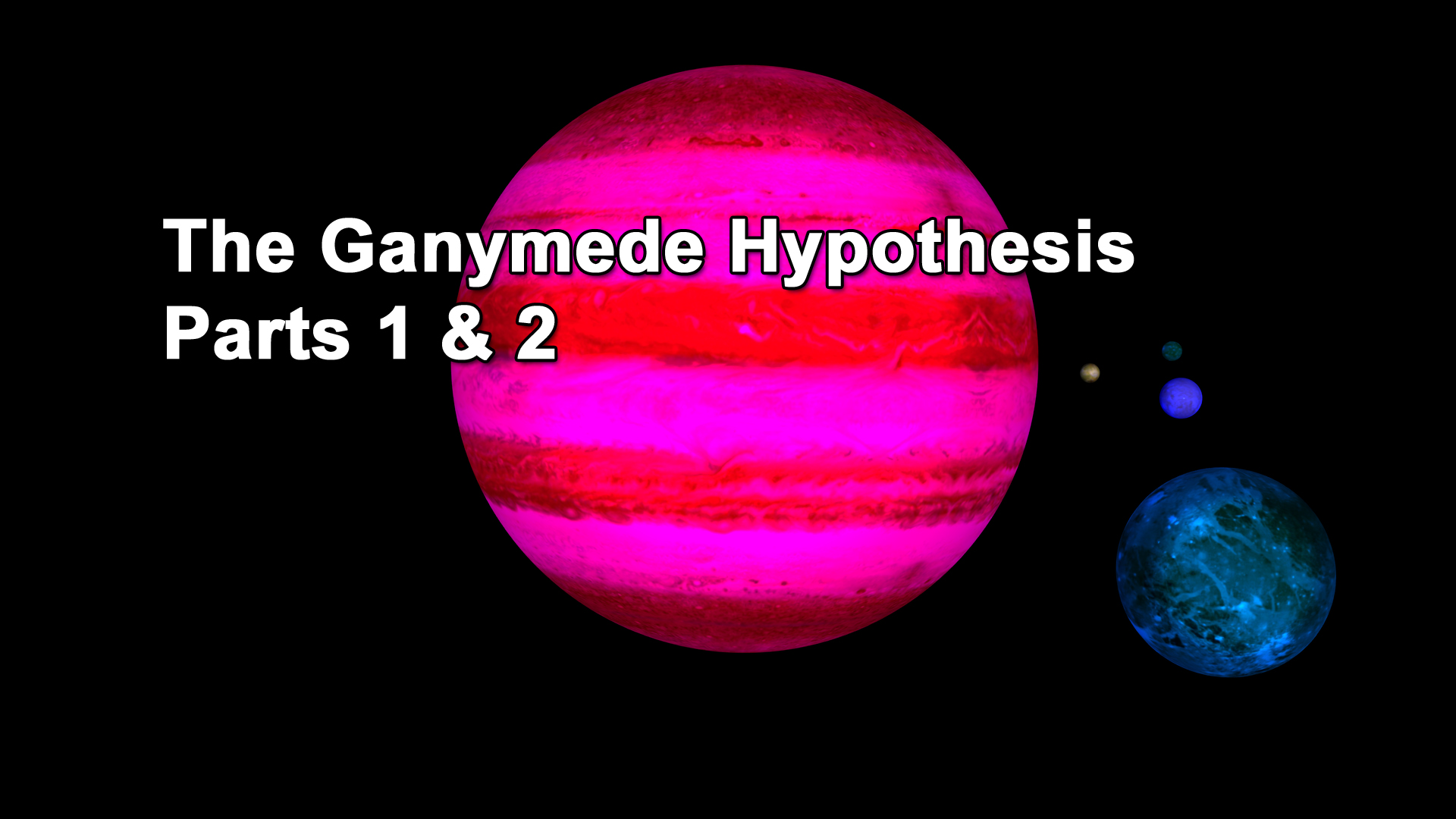
Video introduction to a radical new history of the solar system based on the book ‘Cosmos in Collision‘ by Ted Holden and Troy McLachlan
Otherwise: There is no scope in this section of the website for a discussion on a working physics model for a polar configuration scenario, especially based on what we know in science today – suffice to say that the oral traditions and records of the ancients point to a polar configuration as being their actual experience,… if we are to take them literally. For a more scholarly overview of the main components to a Saturnian polar configuration can be found here)
Life under a Polar Sun
Governed by this polar configuration the earth would have been enveloped in this brown dwarf star’s plasma sheath, a giant bubble of plasma that is the equivalent of our current sun’s heliosphere.
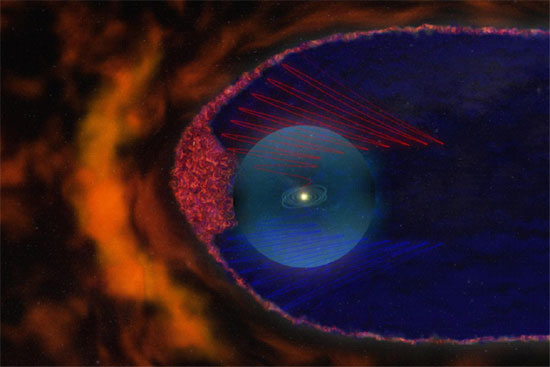
An artist’s impression of how modern science sees the sun’s heliosphere as a protective bubble. The pinkish froth to the left of the solar system is representative of the creation of magnetic bubbles as the heliosphere travels through space. Credit: NASA
The Sun’s heliosphere is currently believed to serve as a protective bubble around the current solar system shielding it from so-called intergalactic solar winds. (Note: Modern mainstream scientists generally do no recognise the connection between the sun’s known heliosphere and the role played by electrical plasma in space – this is an Electric Universe concept)
Saturn’s protective plasma sheath
With Earth previously being wrapped in Saturn’s brown dwarf star plasma sheath, all the radiated energy and light being emitted from the brown dwarf would have been uniformly reflected back off the plasma sheath onto Earth. This would have effectively blocked out all other incoming light from other stars and produced a purple-like celestial haze due to the radiation frequencies produced by a brown dwarf star. Hence the ‘purple’ colouring of what is called the Purple Dawn of man’s ancient past.
In the above figure you can see that Mars has been included. This is because its presence within the Saturn system is vital in understanding how this Saturnian polar configuration would have looked from Earth. As a silhouetted dot against Saturn’s larger disk, Mars would ultimately provide the ‘pupil’ to the all-seeing eye that would look down on Earth.
This purple dawn period would have produced an environment of perpetual twilight, with uniform global temperatures producing virtually no wind and there being a complete inability to calculate time. All continents, including Antarctica, would have supported the continual growth of fantastically elongated and splayed reddish vegetation in tropical abundance. Adapted through its red colouring to absorbing Saturn’s radiated energy rather than its light, Earth’s vegetation would have enjoyed a complete absence of seasons and this would have contributed to a densely rich atmosphere able to supprt the flight of giant insects that we know once existed.
From orbit, the Earth would have been cast in a darkish purple hue, and its ocean levels would have been significantly lower leading to larger versions of the existing continents as well as the existence of now lost and submerged continents.
Also, the Earth’s then electrical relationship to its brown dwarf star would have produced a different and lesser gravity allowing for the gigantic proportions of some species (now extinct) to flourish.
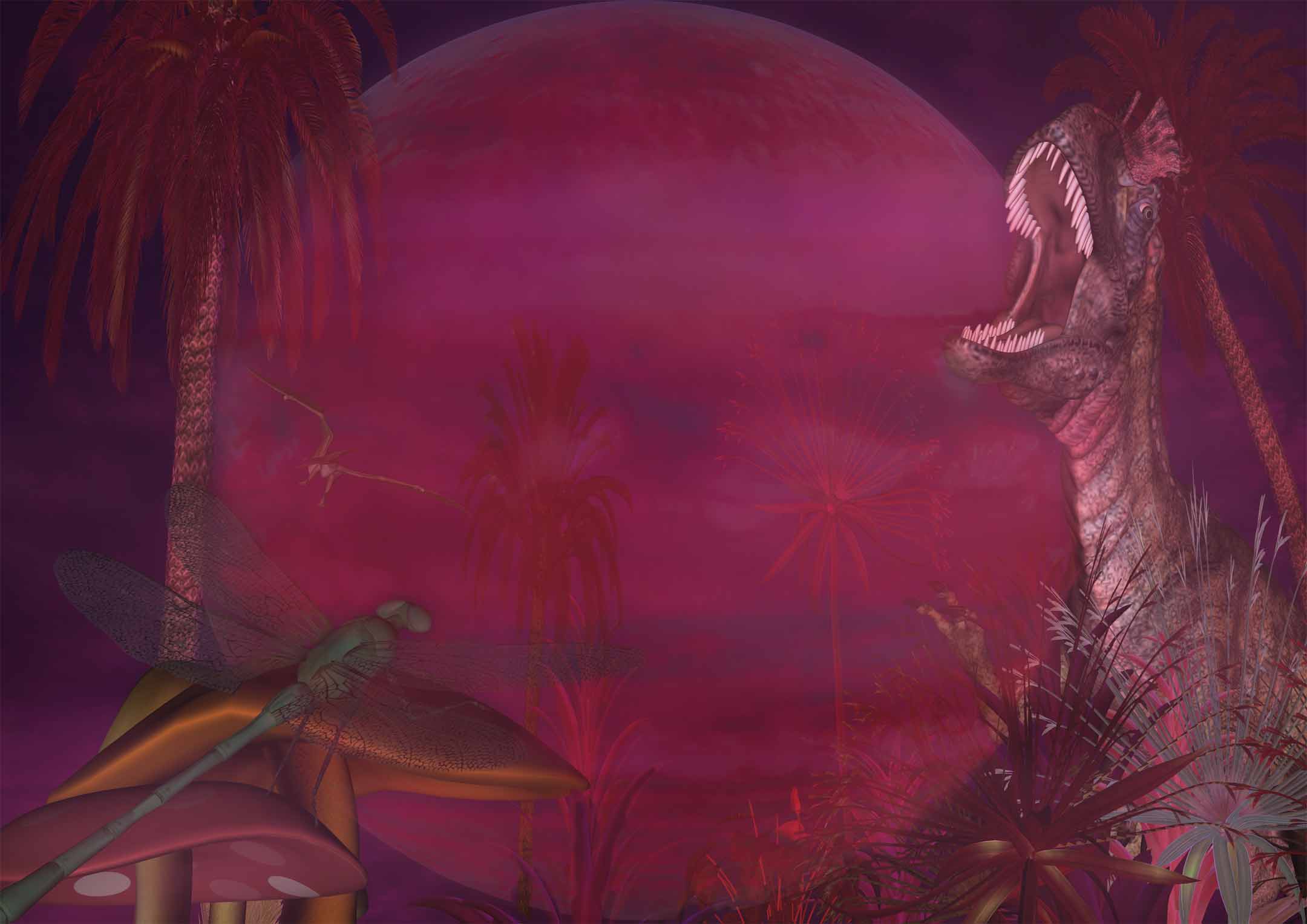
Earth’s nocturnal purple glow and lower gravity during the age of the dinosaurs. The looming presence of Saturn as a brown dwarf star can be seen through a thick atmosphere would have further allowed for the flight of pteranodons and giant insects that we know once existed. (This image represents the distant primordial Mesozoic age, i.e. 110 -230 million years ago when Earth was most likely in a phase-locked orbit before shifting to an axially aligned polar configuration with Saturn between 100,000 and 60,000 year ago – see The Saturn Death Cult book for more details)
How far back into time this state of affairs existed is hard to say, but eventually, a series of man-witnessed cataclysmic events started to change the Earth’s relationship with its brown dwarf star and herald the start of what would become known as the Golden Age.
As this polar configuration of Earth and brown dwarf star drifted through space, it would have done so in an upwardly spiralling motion. Unbeknown to an observer from Earth, the brown dwarf star’s protective plasma sheath, which blocked out all reference to outside stars, would have slowly started to spiral towards the Sun’s own protective plasma sheath, the heliosphere – with disastrous consequences.
The spiralling nature of the brown dwarf star’s approach to the sun would have meant that first contact between their plasma sheaths would have been relatively brief. In fact, there may have been multiple contacts into the distant past before the Saturn system was finally captured by the Sun. This may account for the periodic extinction events in the fossil record as each contact caused Saturn to flare up and die down with marked changes in the relationship between Earth and its northern star.
By the time mankind witnessed such an event, contact would have manifested itself as a sudden and very bright flaring of its polar star into a fully-fledged sun. Quiet literally, it was a short-circuiting event between the two separate plasma sheaths as they brushed together with the lesser brown dwarf star experiencing a tremendous nova-like destructive surge of discharging electrical activity before swinging away from the Sun and back into interstellar space.
Human observers on Earth at that time would have been totally ignorant of the role played by the Sun’s heliosphere in the reaction they were then seeing take place in their once peaceful heavenly orb. After the initial blinding flare-up of their polar star the Earth would have been bathed in a diffuse, yet intense light unlike anything they had ever experienced before. As Dwardu Cardona surmised in his books God Star, Primordial Star and Flare Star, it was Day One of creation – let there be light!
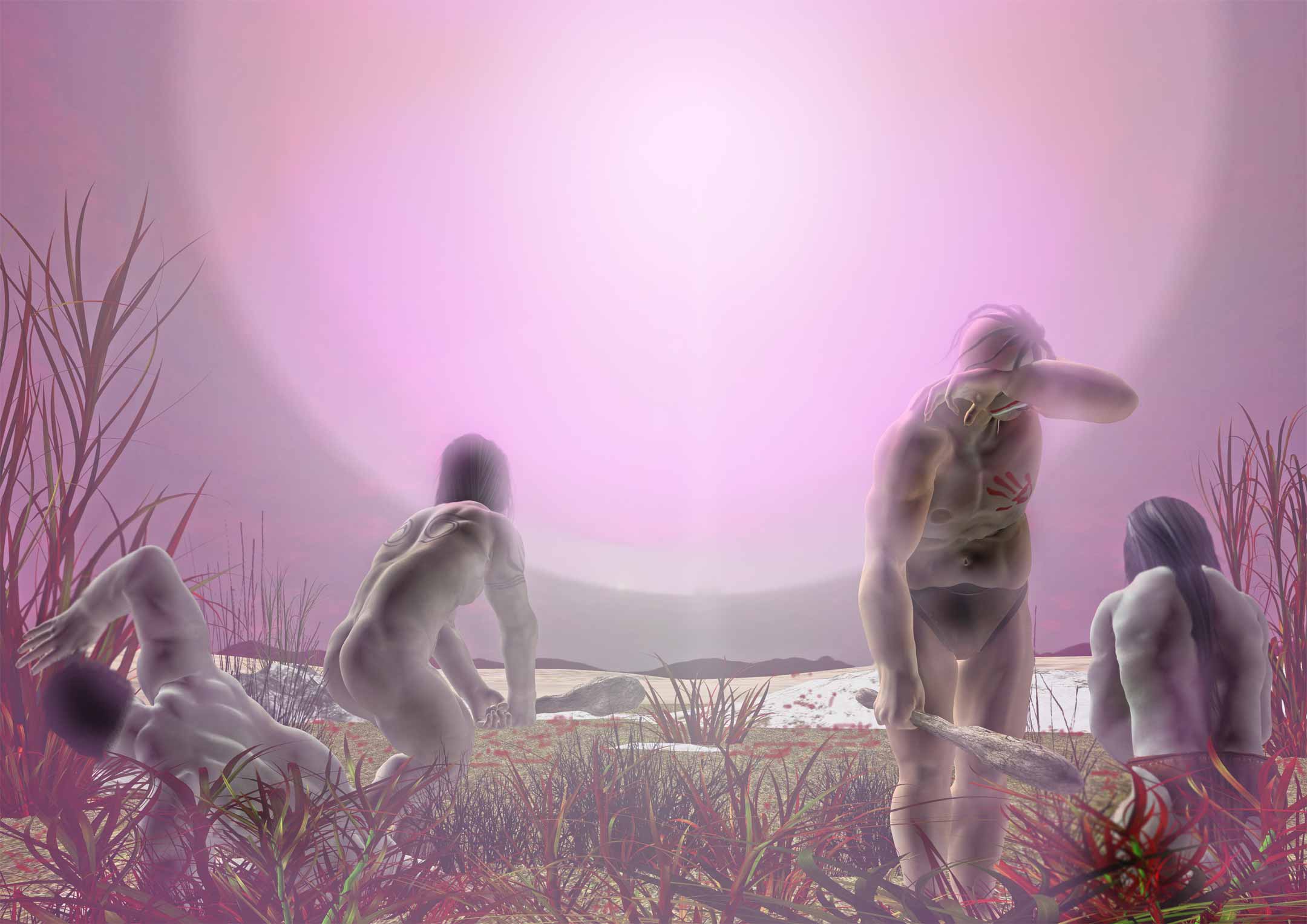
Let there be light! The startling effect on primordial man of Saturn flaring after its plasma sheath brushes against the Sun’s heliosphere.
However, the consequences to life on Earth didn’t just stop there.
Flare Star!
(click here for Dwardu Cardona’s seminal book on the subject ‘Flare Star’)
The intense flaring of electrical activity experienced between the brown dwarf star on its contact with the Sun’s heliosphere would have transferred itself into its existing electrical connections with the Earth. Even as the brown dwarf spiralled out of plasmatic contact with the Sun’s heliosphere it would have continued to glow brightly in the Earth’s northern polar sky.
For humans experiencing this on Earth, the brown dwarf star had now become a polar sun that, apart from its static position in the celestial north, was nothing like the dull orb seen in the heavens of the Purple Dawn. Still less bright than today’s sun, it nonetheless shone bright enough to begin the process of physical metamorphosis’ from a reddish purple hued world to the more familiar green of Earth’s current ecosystem. This would have started before the Saturn system’s final capture and demise at the hands of the encroaching Sun as it spiralled back yet again inside the heliosphere’s influence. This would be the event that would mark the end of what had been a golden age after Saturn’s initial flaring.
The birth of Venus
Probably the most disturbing aspect of the changes seen in the former dull disk after its flare-up was the almost immediate appearance of a mighty black spiral coming from the orbs centre and winding itself around the now brightly lit orb.
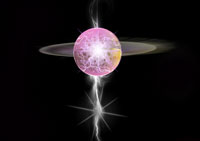
Mythology tells us Venus was born out of Saturn. The ejection of the planetary body that became known as Venus was a particularly violent result of Saturn’s flaring after contact with the Sun’s heliosphere.
This was the result of the violent birth of the planet Venus, but to the Ancients this was the Chaos Monster that their new polar sun or god was compelled to battle with at the onset of creation. It would be remembered in various mythologies as a dragon or feathered serpent and be depicted as the ancient symbol of the self-consuming serpent called the Ouroboros.
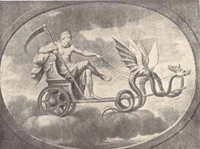
Saturn in his chariot being pulled by winged serpents, a popular image in Roman mythology. (image PD)
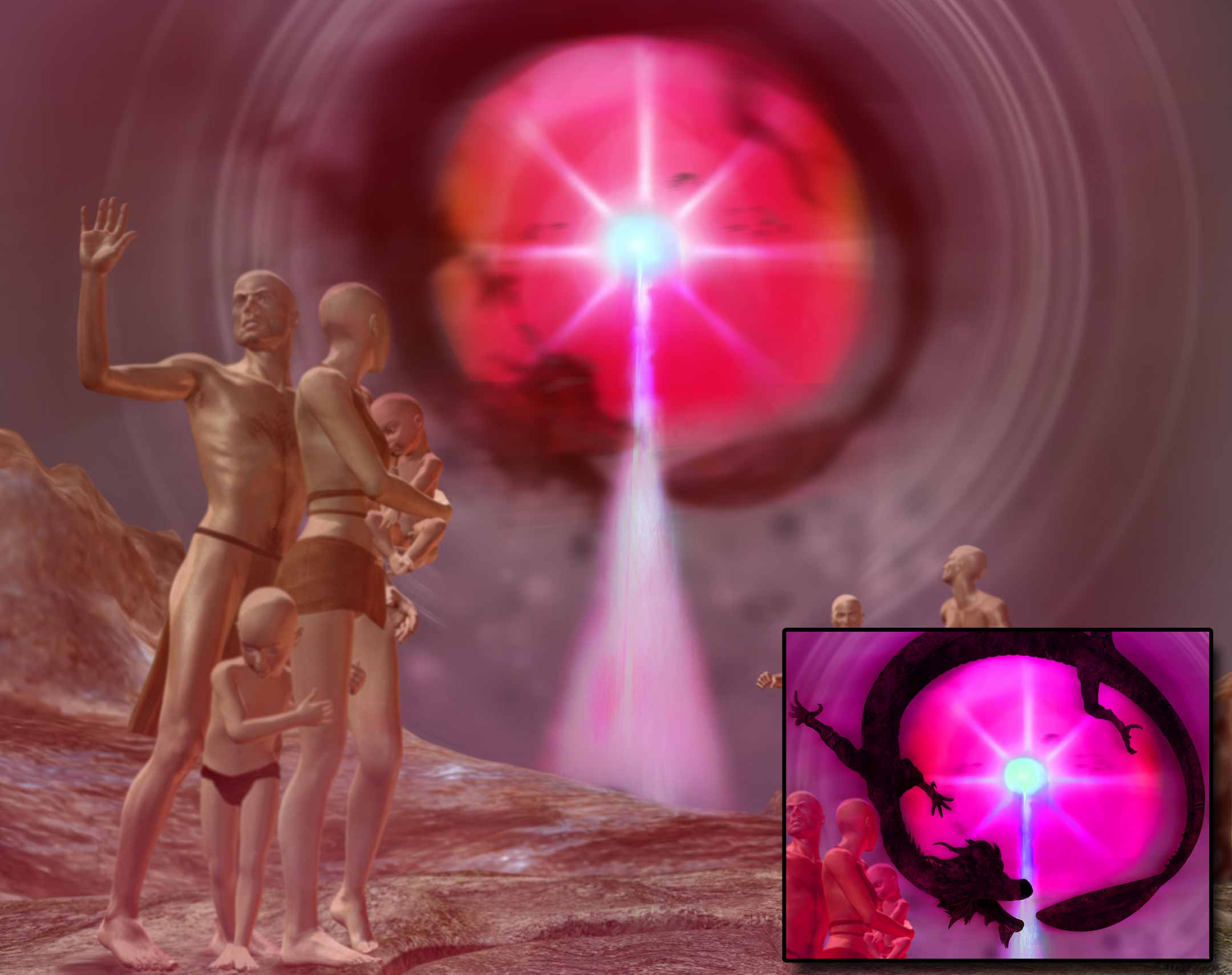
Saturn battling with the Chaos Monster, that Dragon or Feathered Serpent of world mythology most likely to have been ejected debris resulting from the birth of the new planet Venus due to Saturn’s massive flare-up. Enhanced electrical plasma activity called Birkeland currents would appear like a pillar of light leading up to Saturn.

Cultural memories of when Saturn battled the Chaos Monster: (top) Chinese dragons and a central pearl, credit Shizhoa; (bottom left) Quetzecoatl of the Aztecs complete with star burst; (bottom right) Eye in palm surrounded by two serpents – North American Indian.
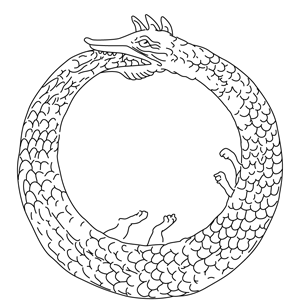
The iconic symbol of the Ouroboros, a self-consuming serpent that is an archetype of the Chaos Monster that appeared in the heavens after the birth of the planet Venus.
As the transformed Saturnian disk of the Purple Dawn fought to subdue this Chaos Monster it started to take on the aspect of a huge round eyeball with a smallish reddish centre or pupil, a greenish iris and the larger bright part of the disk making up the bulk of the cornea. It looked alive, and, over time, with the black spirals of the Chaos Monster all but gone, a discolouring could be seen crossing its glowing outer disk while the green hued iris occasionally seemed to produce an eight-pointed star burst emanating from the disk as a whole.
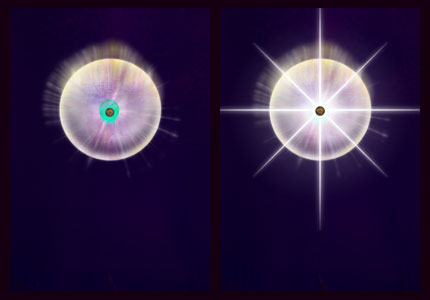
After its flare-up and ejection of Venus, Saturn would alternate between quieter times in which Venus could be seen behind Mars and more electrically active periods in which Venus flared in a distinctive eight-pointed star burst.
Thus the All-Seeing Eye had revealed itself. The All-Seeing Eye was now the god that would go down in the annals of mythology as Ra/Osaris/Horus, Kronos and Saturn. Saturn had revealed himself, and in due time so too would his bride the Evening Star, known as Venus, and his Morning Star-child, called by the ancients amongst other names Mars.
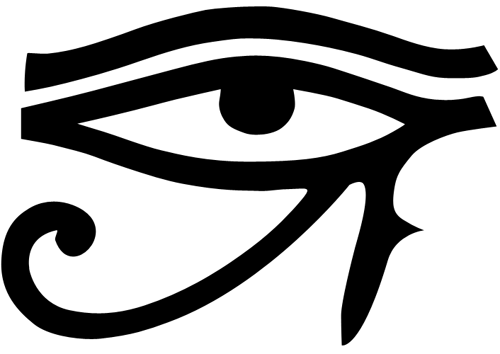
The Eye of Horus – a famous stylized version of the Saturn configuration popular in ancient Egyptian culture.
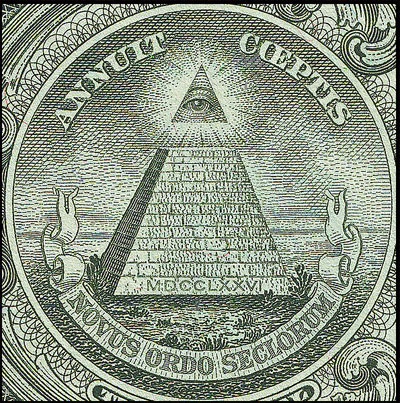
The All-seeing Eye on the US dollar note is the most modern symbolic incarnation of the Saturn configuration.
(continue to From Purple Haze to Golden Days)

